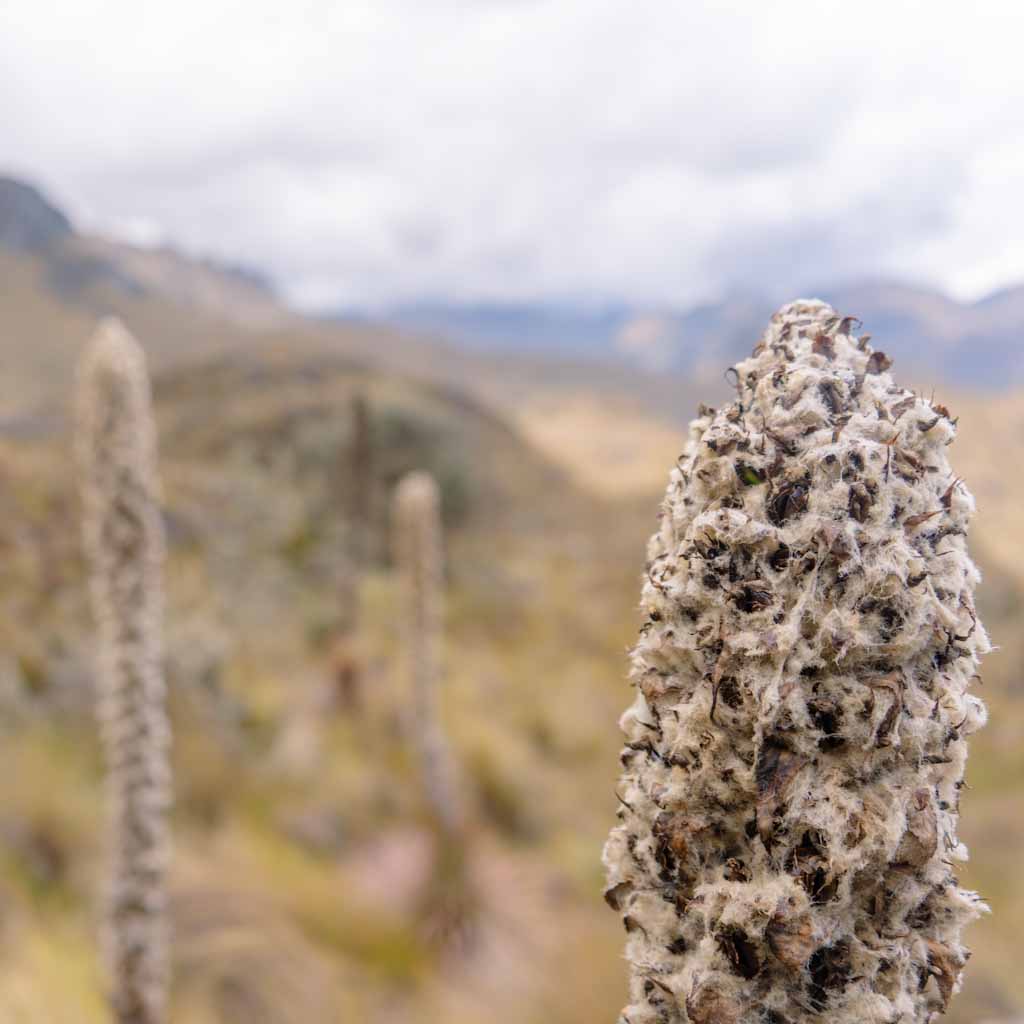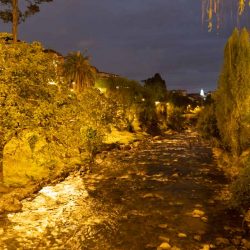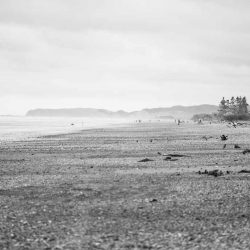The first compact disc I bought was in 1987. It was a saturday afternoon, dad was super proud of the new CD player he had just bought for his family. So we went to one of the two record stores in the small Dutch city we were living nearby. And I picked The Joshua Tree out of the boxes full of square plastics. Four Irishman were looking dead serious at me in black and white from the cover picture, in front of a Joshua Tree playing dead in the Mojave Desert.
U2 was on a roadtrip in those days, just like me now. They were traveling from Reno to the Joshua Tree national park in California together with photographer Anton Corbijn, another genius Dutch guy. At Zabriskie Point in Death Valley he spotted the lonely tree.
So he lined up the band in the middle of the cold desert, took his iconic shots, and told singer Bono about these twisted trees. They were named by early settlers after the prophet Joshua from the Old Testament. A day later the working titles for the album the group was working on – ‘Songs from the desert’ or ’The two Americas’, depending on who you believe – were dropped and The Joshua Tree was born. And don’t go looking for that one particular tree: winds felled it in 2000, even Messiah Bono couldn’t save it from its fate.
One year ago, when I was also traveling Latin America, on one of my endlessly long bus trips, the landscape outside changed from the dreamy cloudscapes in the rain forest in Xilitla where I started, to a barren desert towards Queretaro. This was Mexican heartland, so fascinatingly distinct you remember almost every mile that passed.
So I still know pretty much the exact location of where THAT picture was taken. The photo camera was always on my lap, to capture distinct moments or unique landscapes. So I grabbed it and took two snapshots from the driving bus. To discover in the evening in my hotel room the beauty of that strange tree in the desert. From that moment on it was ‘my’ Joshua Tree picture.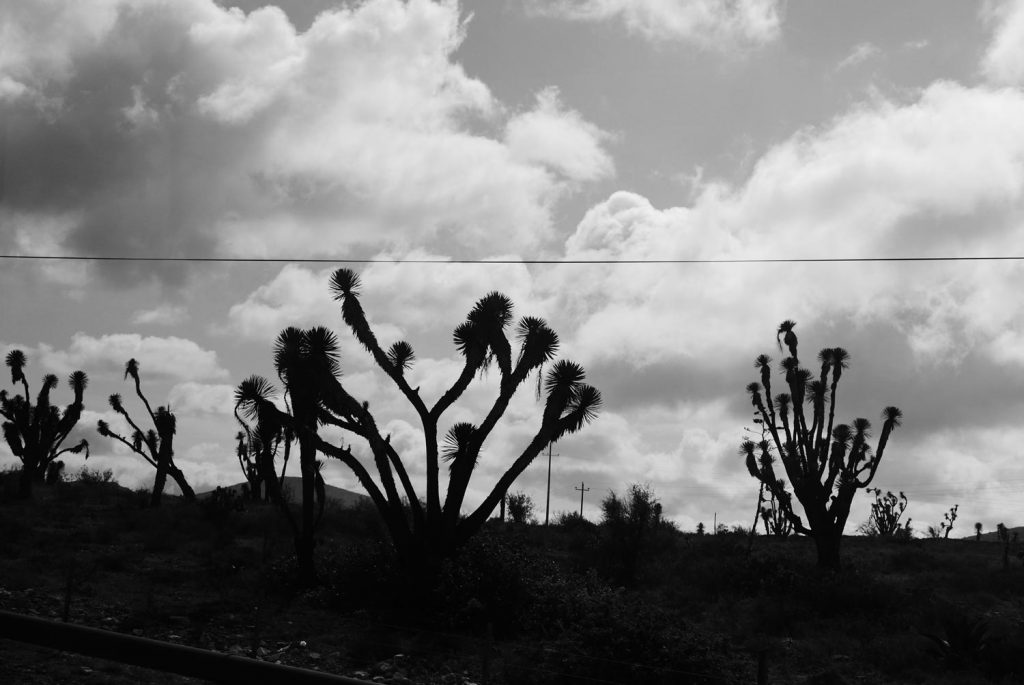
So now I stand here in Parque Nacional de Cajas, at a height of around 4’000 metres, and have to think about those iconic images. Because in front of me is an entire field, in a valley, of dry desert trees playing for dead. This is paramo, dry Andean highlands, and the landscape is so surreal it makes me realize in the moment how unique this is.
I didn’t even intend to go here, from my base in the colonial city of Cuenca. In a mood of laziness I had picked the Laguna Llaviucu part of the national park as my destination of the day. Closer to town and easier to walk.
But whatever you expect from bus rides in Ecuador, customer service is not necessarily a part of it. So the adjudante, the driver’s assistant responsible for collecting money, told me ‘yes’ when I asked him to stop at the Llaviucu entrance, but meant ’I don’t know’. So as we climbed higher and higher with the bus, and my maps app showed me we had definitely passed that part of the park, he stayed silent. Just like me, the tourist that didn’t want to be the arrogant know-it-all telling the locals where was what.
When the adjudante finally reported I had reached my destination, it wasn’t Llaviucu but Toreadora. I thanked him nonetheless of course, playing the rare friendly part of my character. And in front of my eyes of course this otherworldly landscape unfolded and all anger was immediately lost and forgotten.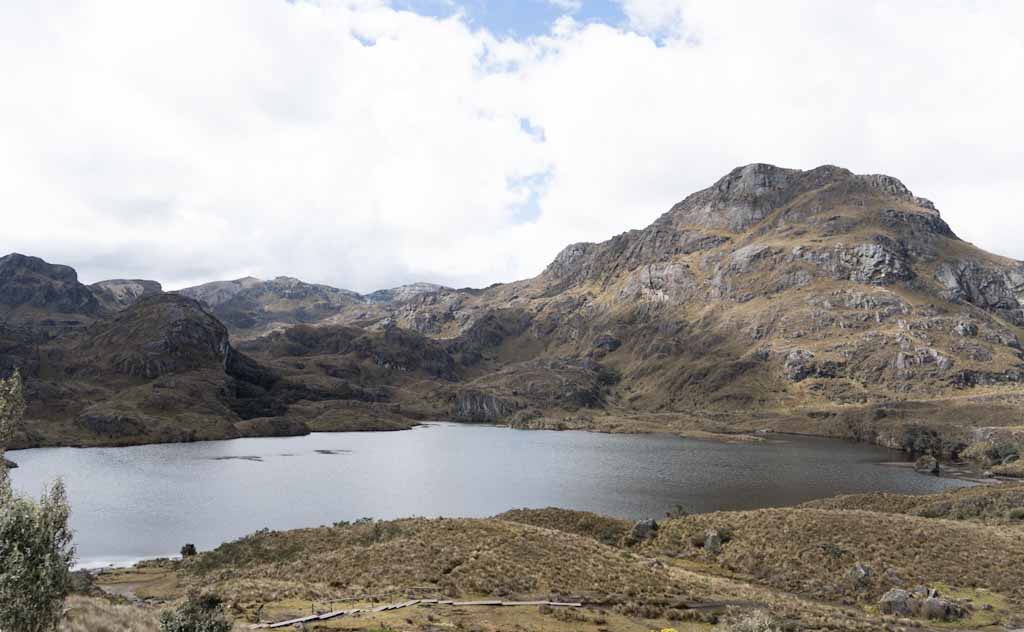
In usual times it was already rather quiet here on weekdays, people had told me. This was a weekday during the pandemic and I felt like the lone idiot that had taken the wrong exit. Why this place had been closed during the lockdown as well was a perfect riddle. After the control post, obligatory to register before you start walking, there was no one to be seen or found. For hours.
The Toreadora lake is right in front of you. A dark glow hovers over it, only mirrored in intensity by the Cerro San Luis towering behind it. Hardly anything higher than a metre seems to grow here. Just moss in varying shades of green greyish brown. This is real paramo. This is what the Andes mountain ridges are famous for. Perfect nothingness almost, even the sound of the buses from the one asphalt road in the valley is slowly dissipating as you move closer to the mountains.
But there is more to this than just moss and an endless array of lakes. Once around the corner, descending slightly into a sheltered hollow, are some strange creatures. These are barren trees, most of them without leaves, twisted and turned to protect themselves against the unforgiven weather conditions. These dwarf Polylepis trees form a dwarf forest, apparently one of the highest in the world.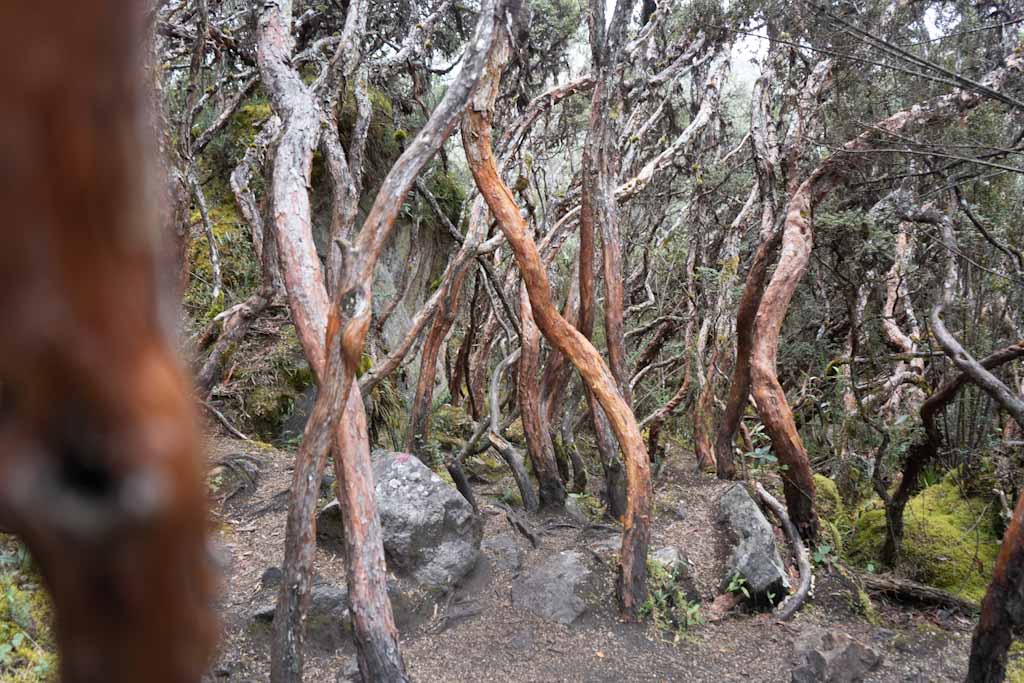
This alone is a place one would love to just sit down with a book to be alone with your thoughts, if the rain wasn’t threatening all the time. So the trail lures you gently away, into the first sighting of smaller groups of strange trees that look as if the branches have been cut off and as if they themselves had died.
Dirtier minds than mine could even see phallic shapes in this strange vegetation, as these stick-like creatures become a bit thicker towards the top. Closer inspection shows all kinds of small flowers and needles growing out of it. It is already surreal something can actually grow here. Let alone hundreds and hundreds of these beautiful rare sticks that remind me of the cover photo of that U2 album or that other genius picture of mine in the Mexican heartlands. Those are also uncompromising landscapes, just like here in Cajas.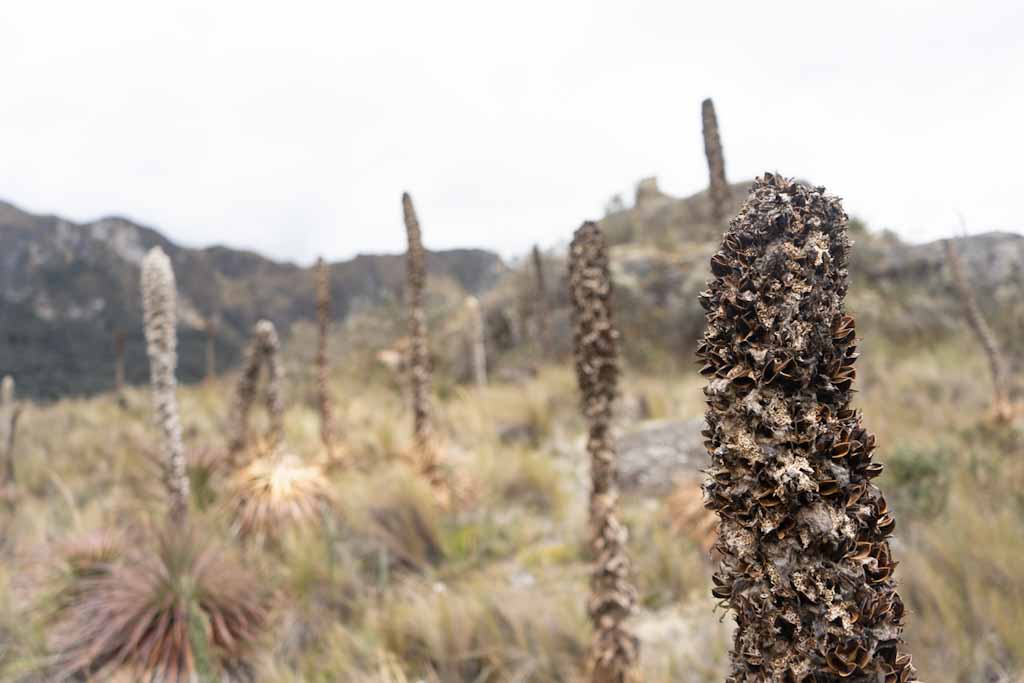
The beauty doesn’t end here. Lakes are waiting to be discovered around every corner, building water reservoirs that are the lifeblood for Cuenca, down in the valley 1’500 metres lower. The trail leads you over a small wooden footbridge over one of these lakes. An ideal spot to have lunch, enjoy the silence and feel like Frodo on one of his hikes in Lord of the Rings.
The path that sometimes isn’t a path at all curves up and down the golden brown hills. Somehow I end up on the longer trail, but ignorant me doesn’t notice that and enjoys the otherworldly scenery until I hit the fence of the national park. Something that only can happen… if you take the longer trail, that does NOT run in a circle from the control point.
But hey, accidents like that are gifts of imperfection that make for great memories as long as you manage to get out safe. So after a short free-style stretch through the soppy wet meadows and a stony hill the red marks indicate I am on the correct circuit again. Slowly the sound of the cars of the normal world start to weave themselves into the soundtrack again, as even some other human beings are encountered, plotting the ideal location to put their tent up for a night. Brave souls, indeed. But not me.
The control point finally appears on the horizon, a short walk up. It is a strange psychological phenomenon that you immediately start to feel the tiredness of your body once the finish is in sight. As if there is again a self-protecting mechanism in place, not allowing you to feel the energy fading from your body until you know that you are safe. Which is now. Because Lake Toreadora is there again, and I only have to wave down a bus on the road to Cuenca to stop and pick me up. What could possibly go wrong?
